Accessible and technically up to date
For the Qantas Founders Museum we worked with zetcom to develop a multimedia guide with tours, stops and numpad that is optimized for screen readers. The digital experience is complemented by virtual reality elements and two interactive AR stations that vividly convey aviation technology.
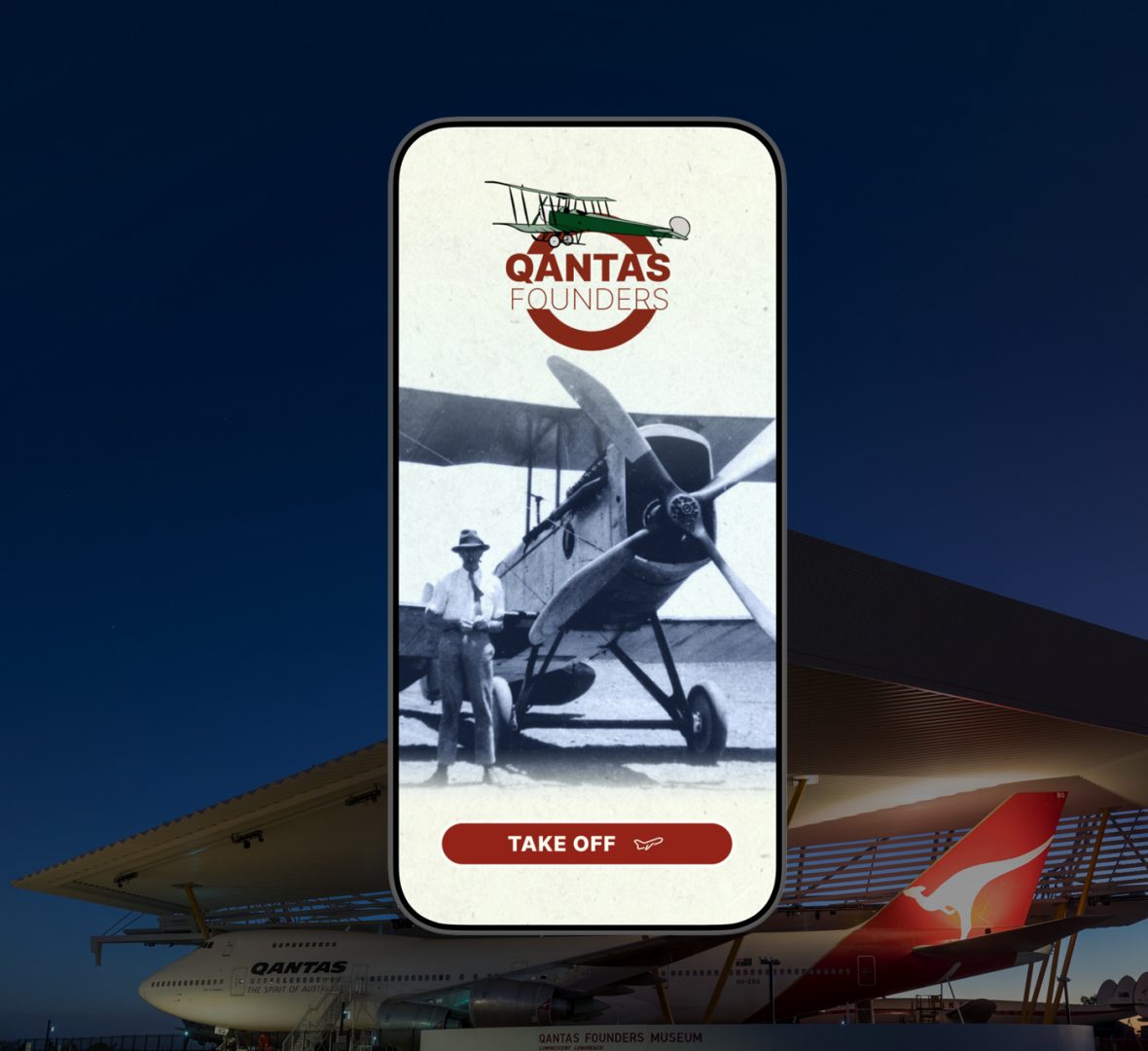
Experience technology with AR
At the first station, visitors can assemble their own aircraft – from a simple wooden frame to take-off. The second station presents a highly detailed 3D model of a radial engine. Users can click on individual components to obtain exciting background information and technical details.
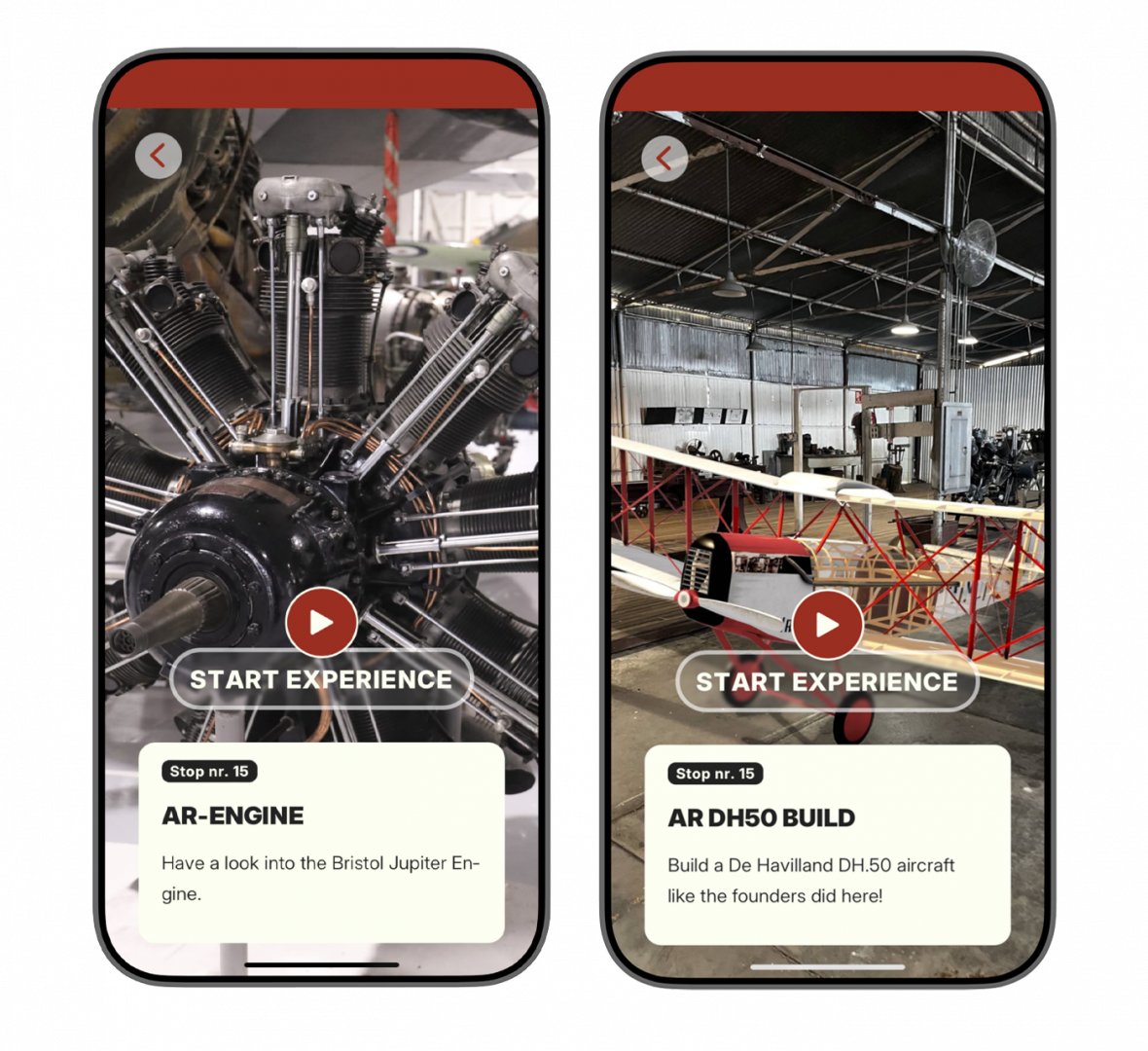
Thematic navigation
Navigation within the app is not only functional, but also thematically staged: Animated marshals – as used in real airfield operations – guide visitors around the extensive grounds of the Qantas Founders Museum with authentic hand signals.
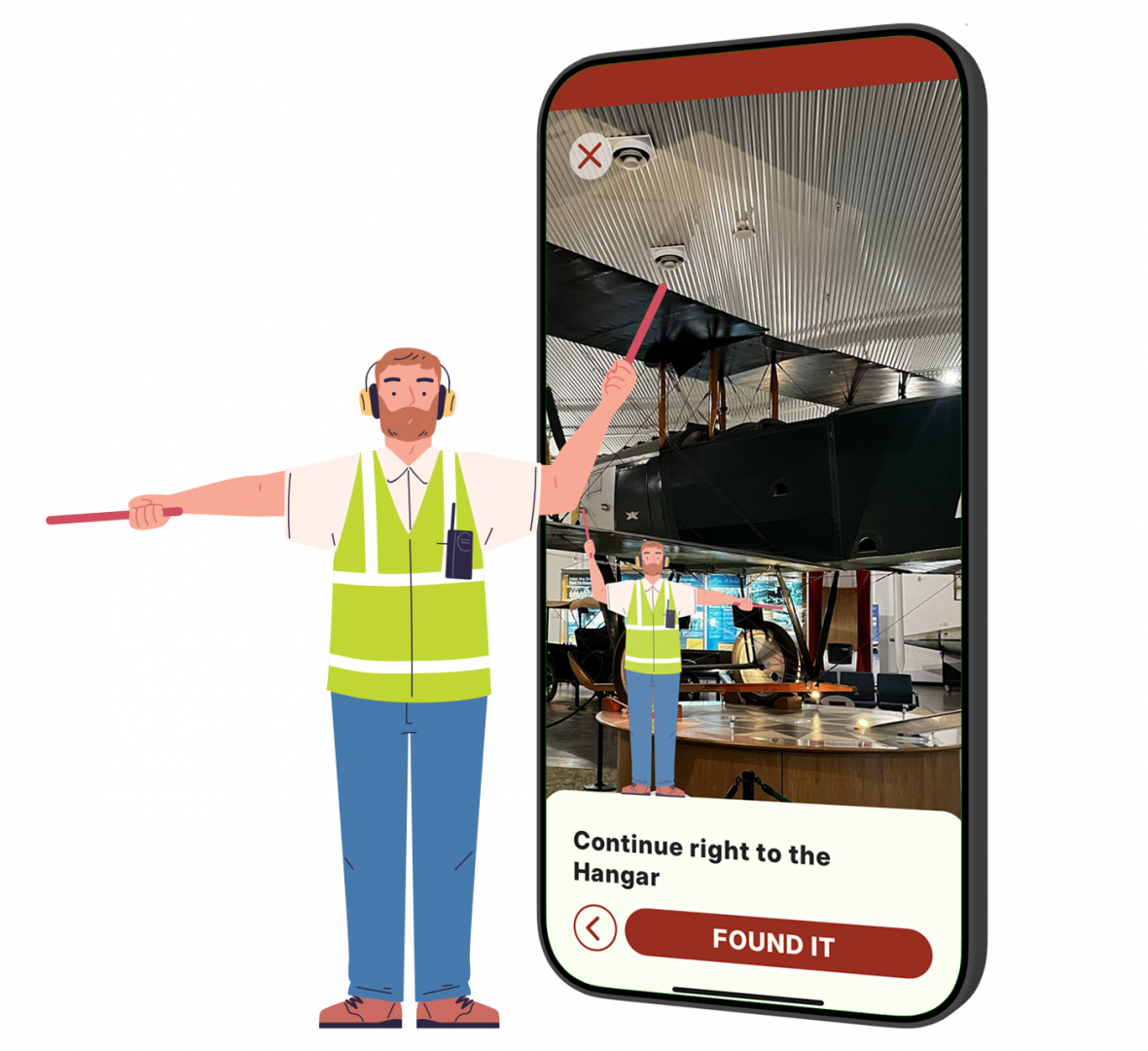
Accessible exploration with virtual reality
At the museum, some of the iconic aircraft models can be walked through and viewed directly. VR models, including that of a BOEING 747, offer an accessible alternative to give people with reduced mobility an equivalent experience.
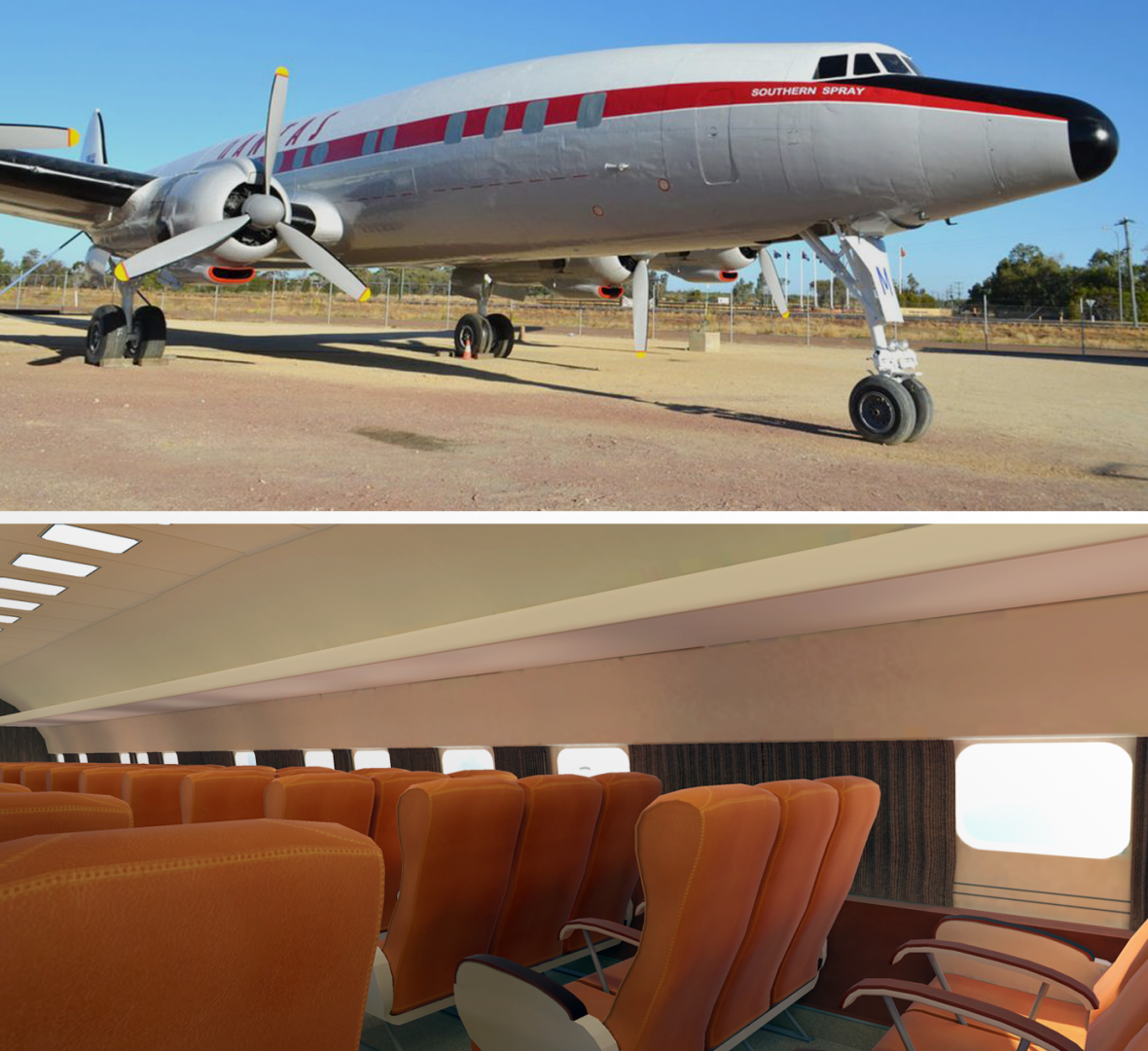

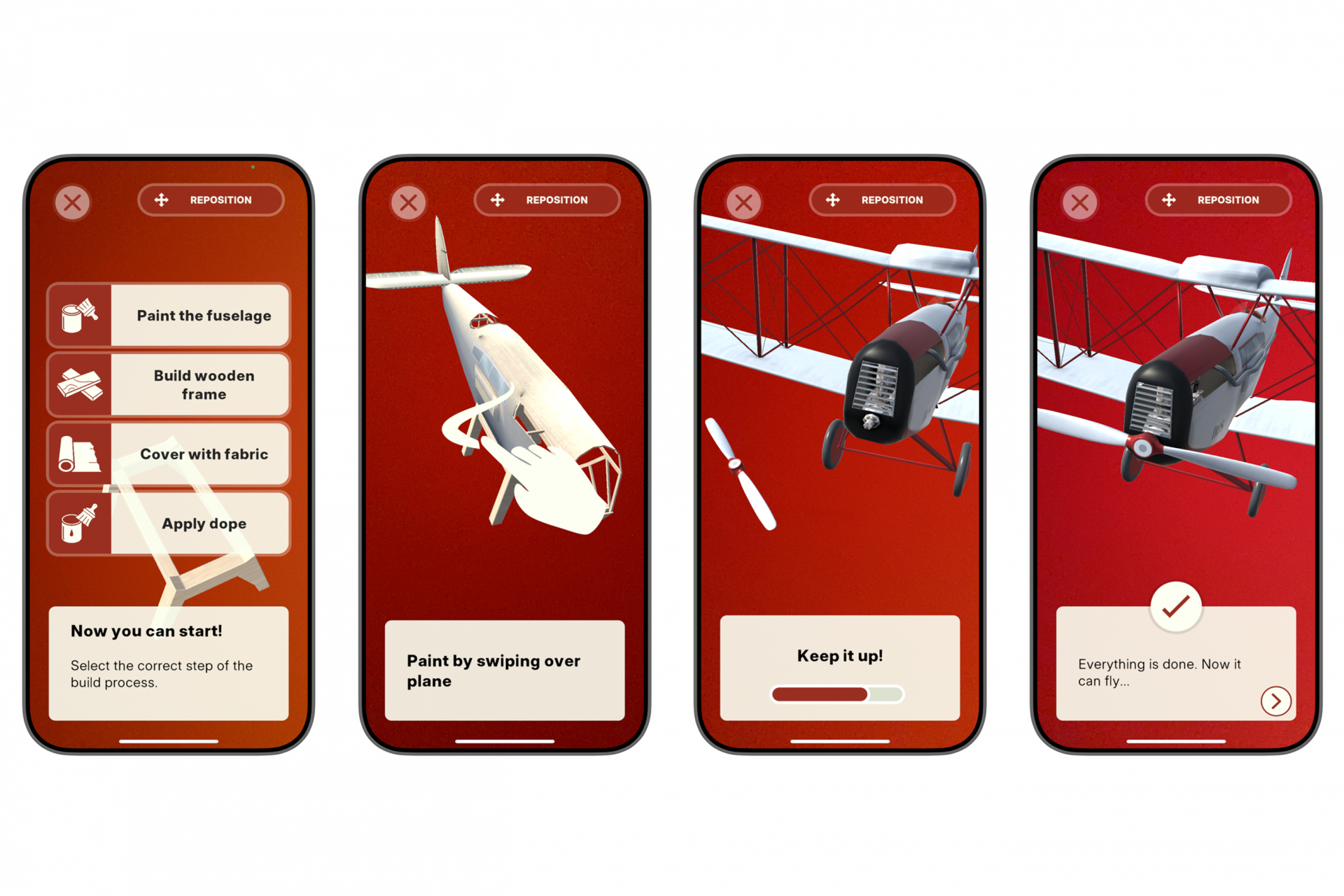

“With our new immersive experiences, we have taken another step into the future of the Qantas Founders Museum and strengthen our profile as a mandatory stop for travellers. Our partners at zetcom and fluxguide did a terrific job and exceeded our expectations in terms of commitment and attention to detail.”
Tony Cullen, CEO Qantas Founders Museum
Discover more
Digital accessibility, AR experiences or lean visitor tours for museums? We would be happy to provide you with a non-binding consultation and work with you to develop a guiding app that is tailored to the needs of your target group. Make an appointment now.
In partnership with the State Archaeological Collection, we created The Snake Game to celebrate its grand reopening in 2024. Our mission: to make archaeology exciting and accessible, especially for younger generations.
The result is an immersive Augmented Reality adventure with a playtime of around 80 minutes—blending the warm, nostalgic charm of early 2000s gaming with a lighthearted sense of humor.

The Game
AR snake ‘Sisssi’ leads you through the exhibition along nine stops. At each stop there are historical puzzles and tasks to solve. For example, the aim is to prevent an outbreak of plague, decipher cryptic inscriptions on a sacred stone or rebuild a destroyed column. Two other characters in the form of historical masks support the visitors.

Concept & Production
Following the official kick-off in July 2023, we entered a multi-month concept phase. In close collaboration with ASM, we defined the key messages and transformed them into a fully developed script. From there, we moved on to the technical implementation in Unity. At the same time, together with our partner Soundgarden, we selected the right voice talents and organized professional direction—both on-site and remotely.
The result: a captivating Augmented Reality game with a total playtime of around 80 minutes—infused with the warm, nostalgic aesthetics of early 2000s gaming and refined with a subtle touch of humor.



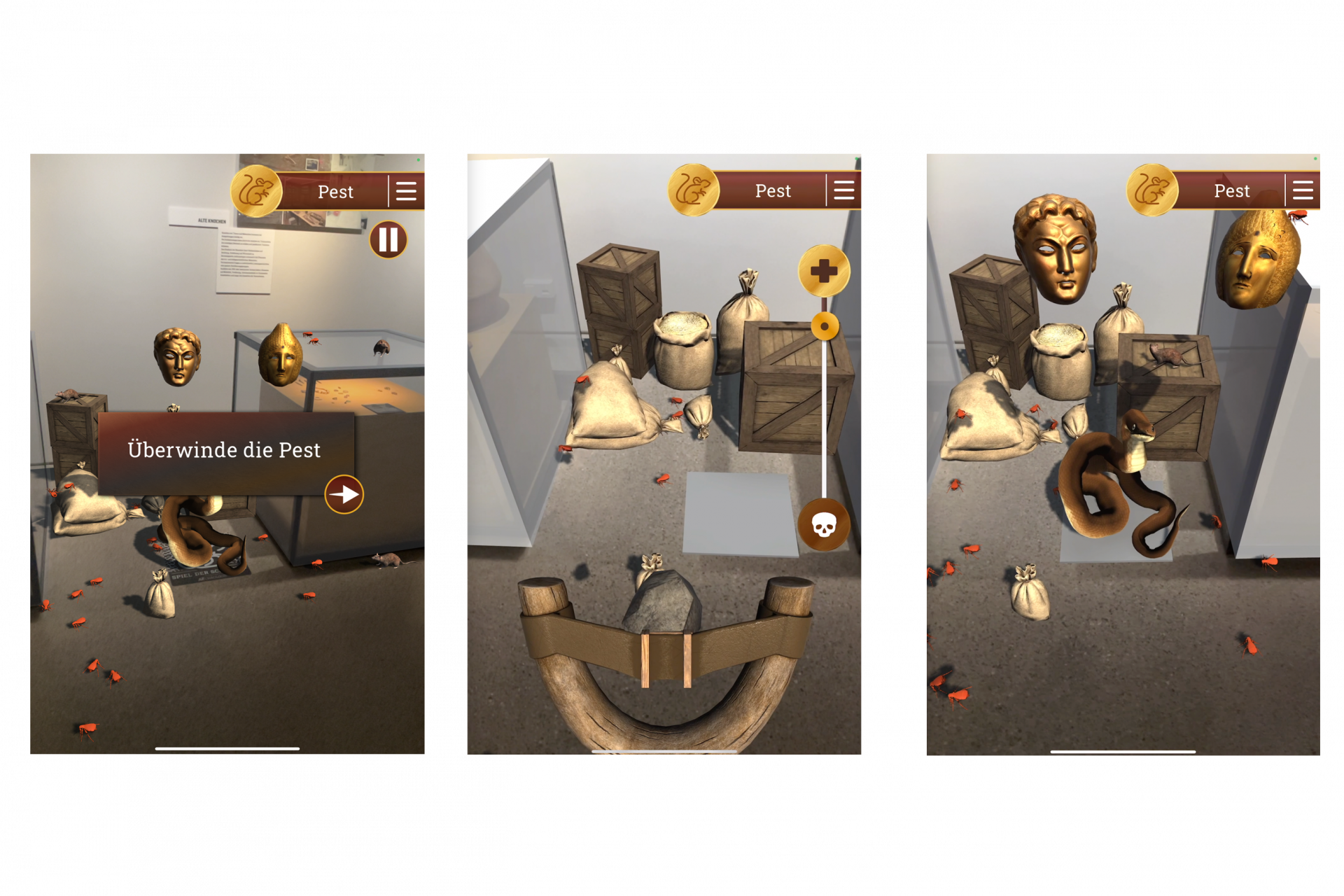
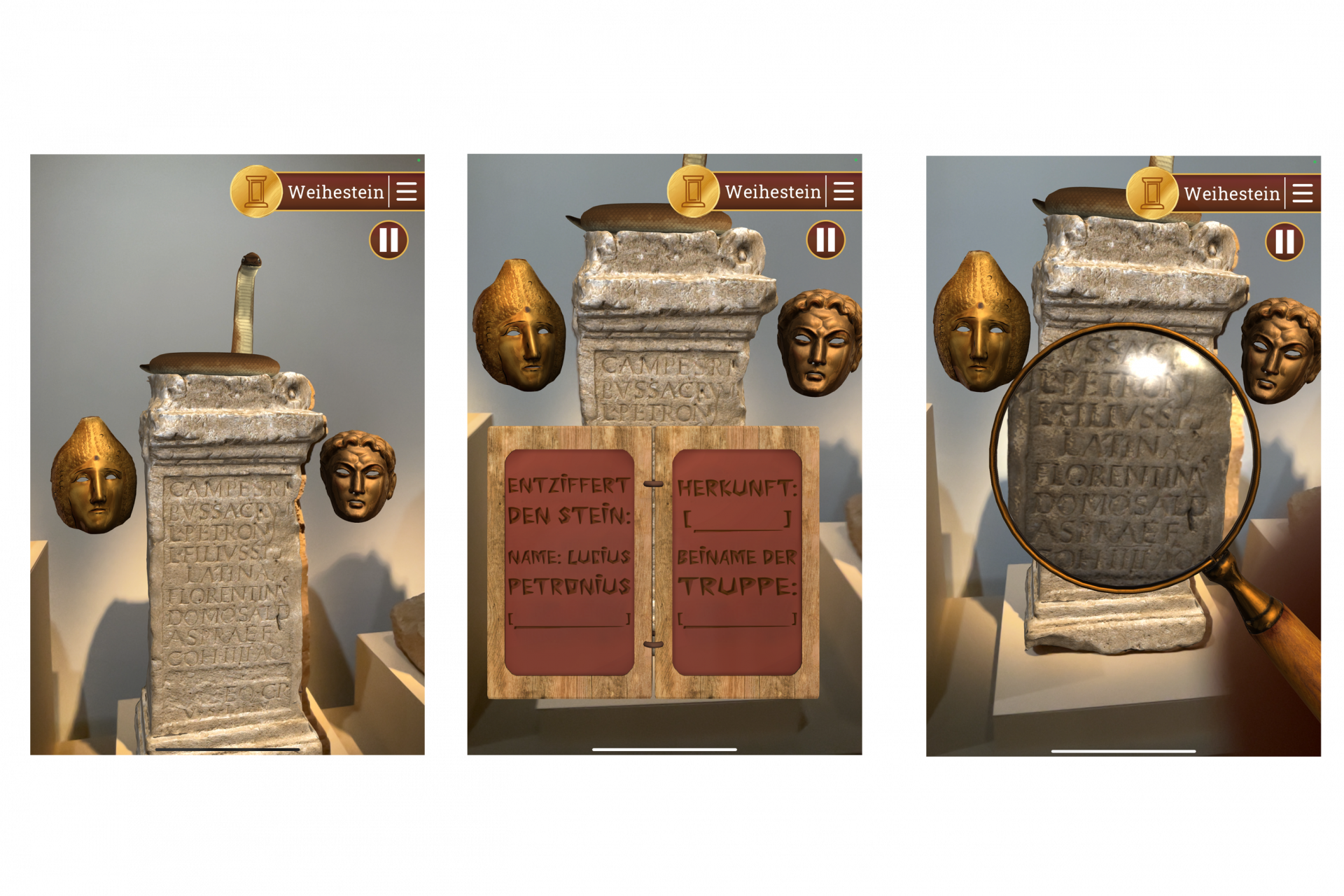
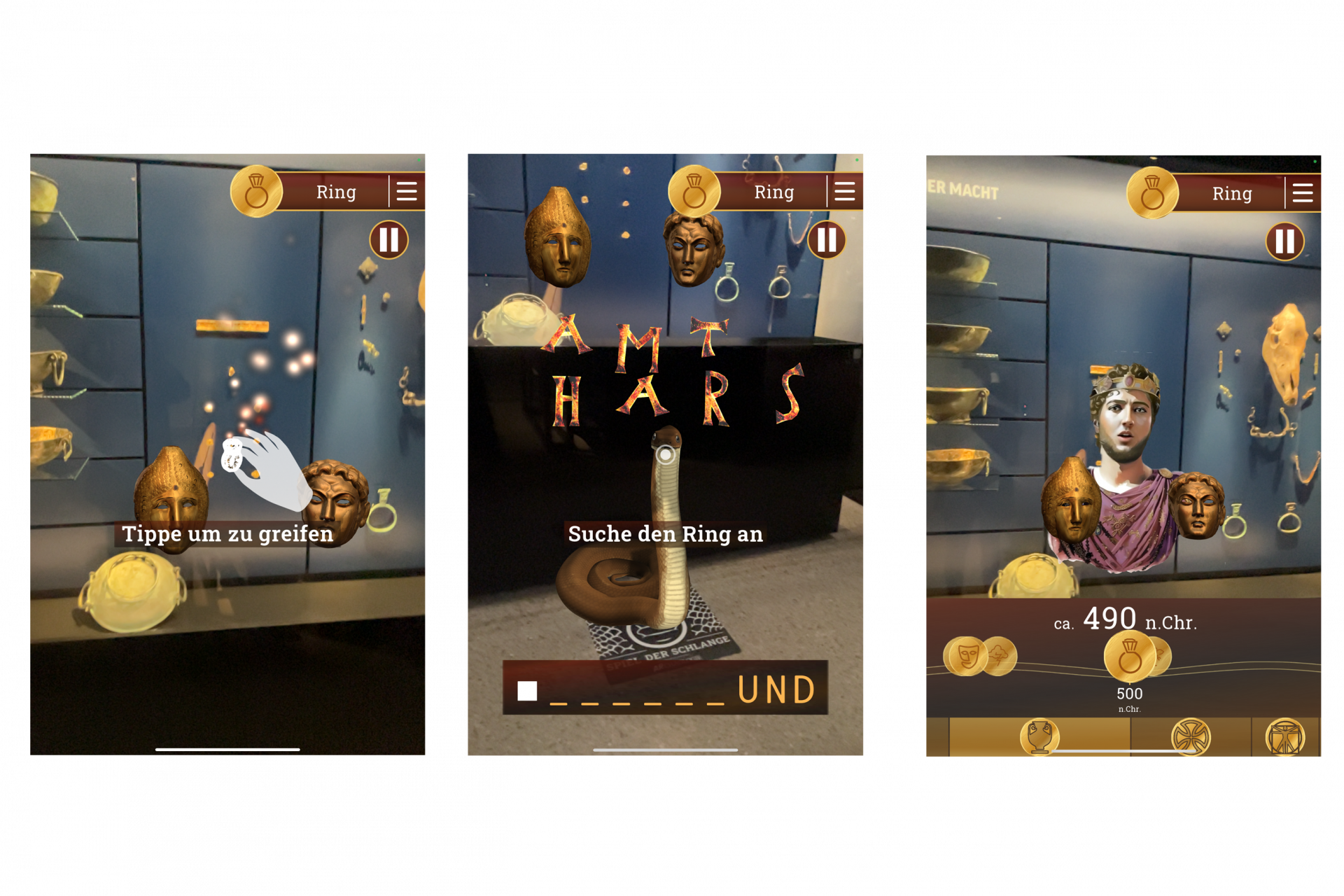
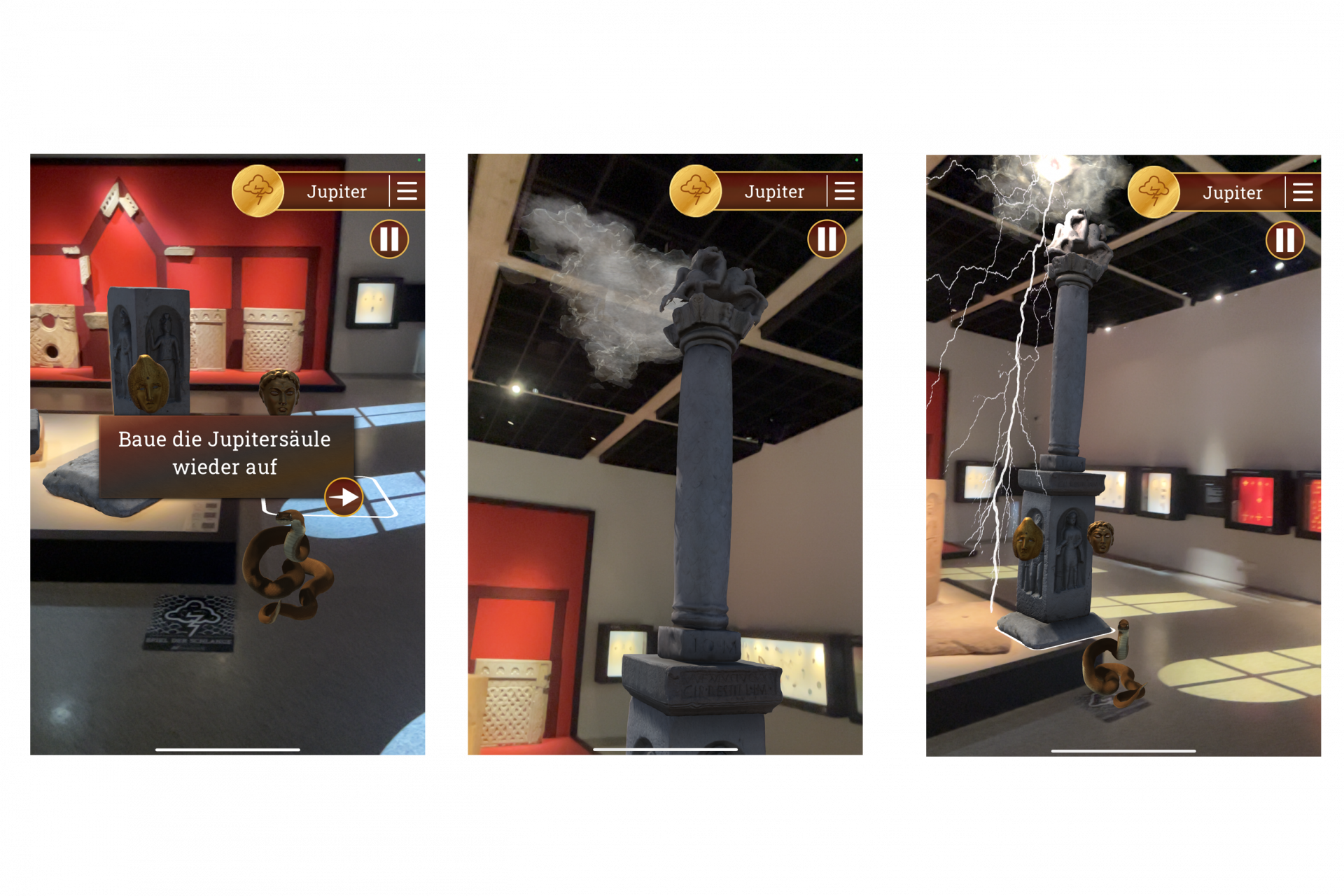
The game is running splendidly and the response has been overwhelmingly positive.
Dr. Brigitte Haas-Gebhard (ASM)
Learn more
We would be happy to advise you on the possibilities of cutting edge AR experiences for your institution. Arrange a non-binding initial appointment now.
Touch installations and gamification introduce children and young people to the world of non-representational art. Six stations invite young visitors to get creative themselves and immerse themselves interactively in the design of abstract visual worlds. Here is an overview of the individual stations.

Game “Gesture”
Visitors can create color spots by touching the touchscreen. Full body use: The screen not only reacts to the index finger – it can also be painted with knees and elbows. The intensity of the color stain is directly proportional to the duration of the touch. Based on the color world of an original painting from the exhibition, a new work of art is created.
Game “Dance”
At this station, your own body becomes a paintbrush. Up to 4 visitors can create a picture simultaneously by means of dance and body movement. A motion-tracking camera is used to capture the body movement and translate it into an image.
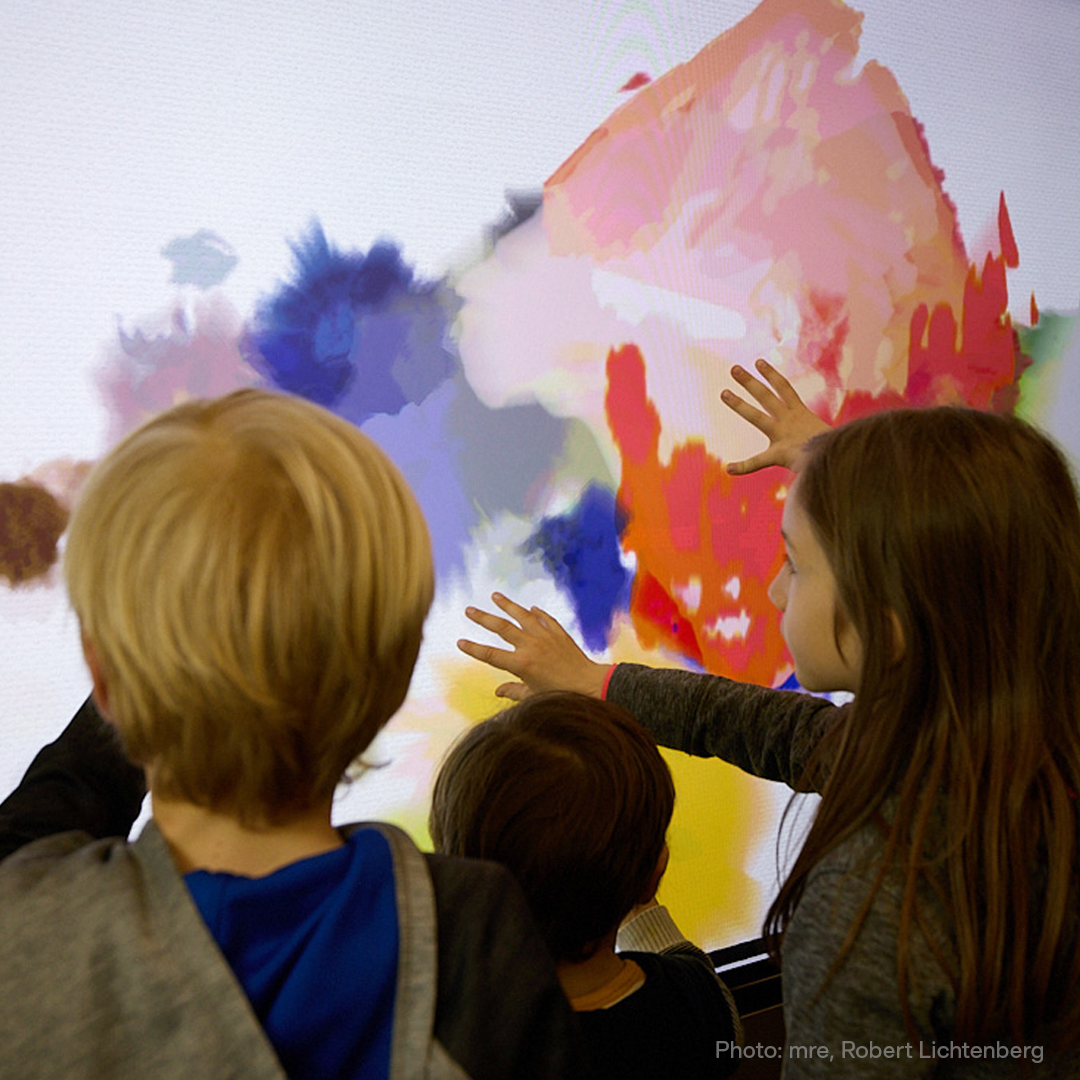
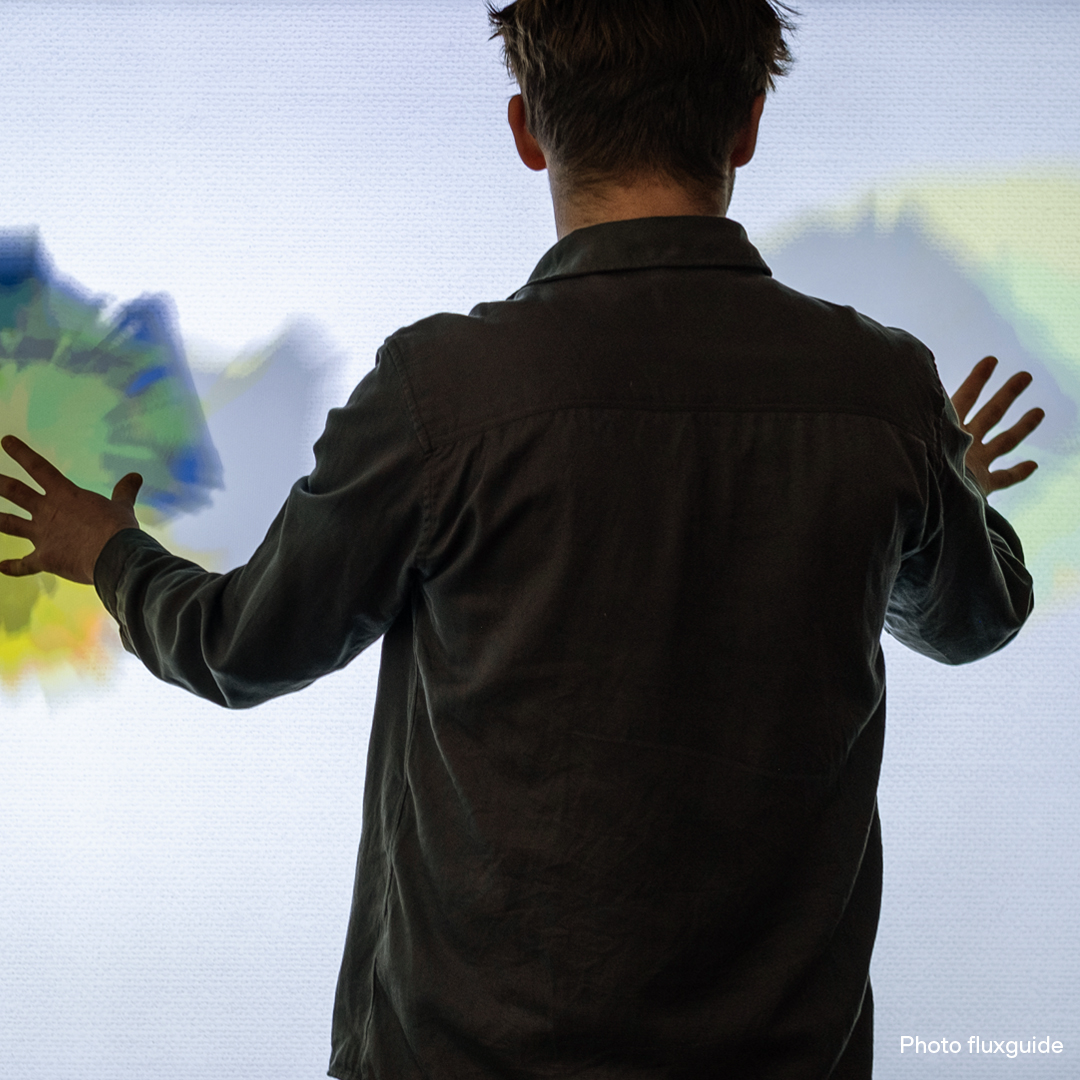
Game “Brushstroke”
A portrait photo taken in the exhibition space can be transformed at this station into various painting styles featured in the exhibition. In this way, the wide range of abstract art styles becomes visible through a selfie.
Game “Painter”
At this station, a portrait photo taken in the exhibition space can be transferred into different painting styles of the exhibition. The range of different painting styles of abstract art thus becomes visible by means of a selfie.
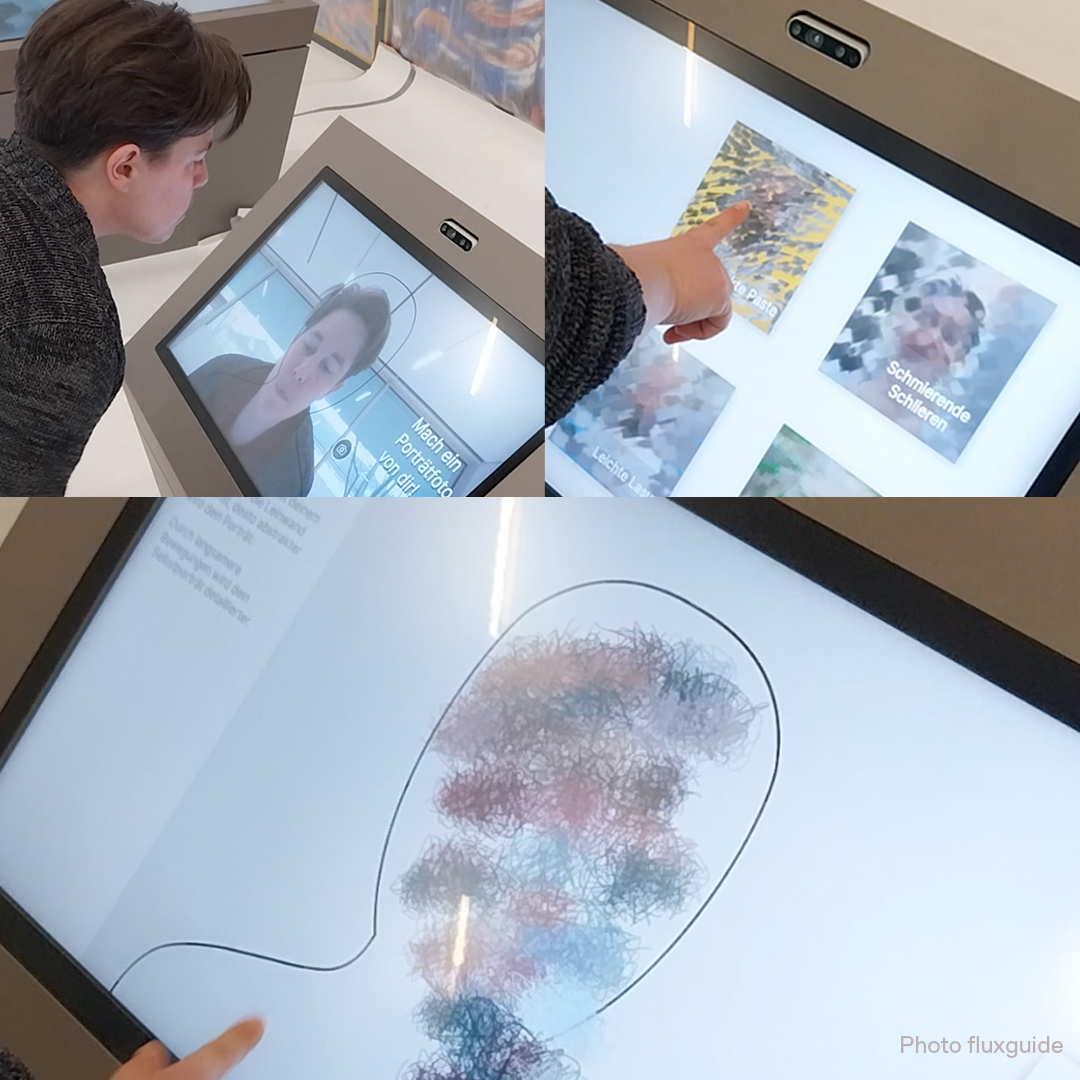
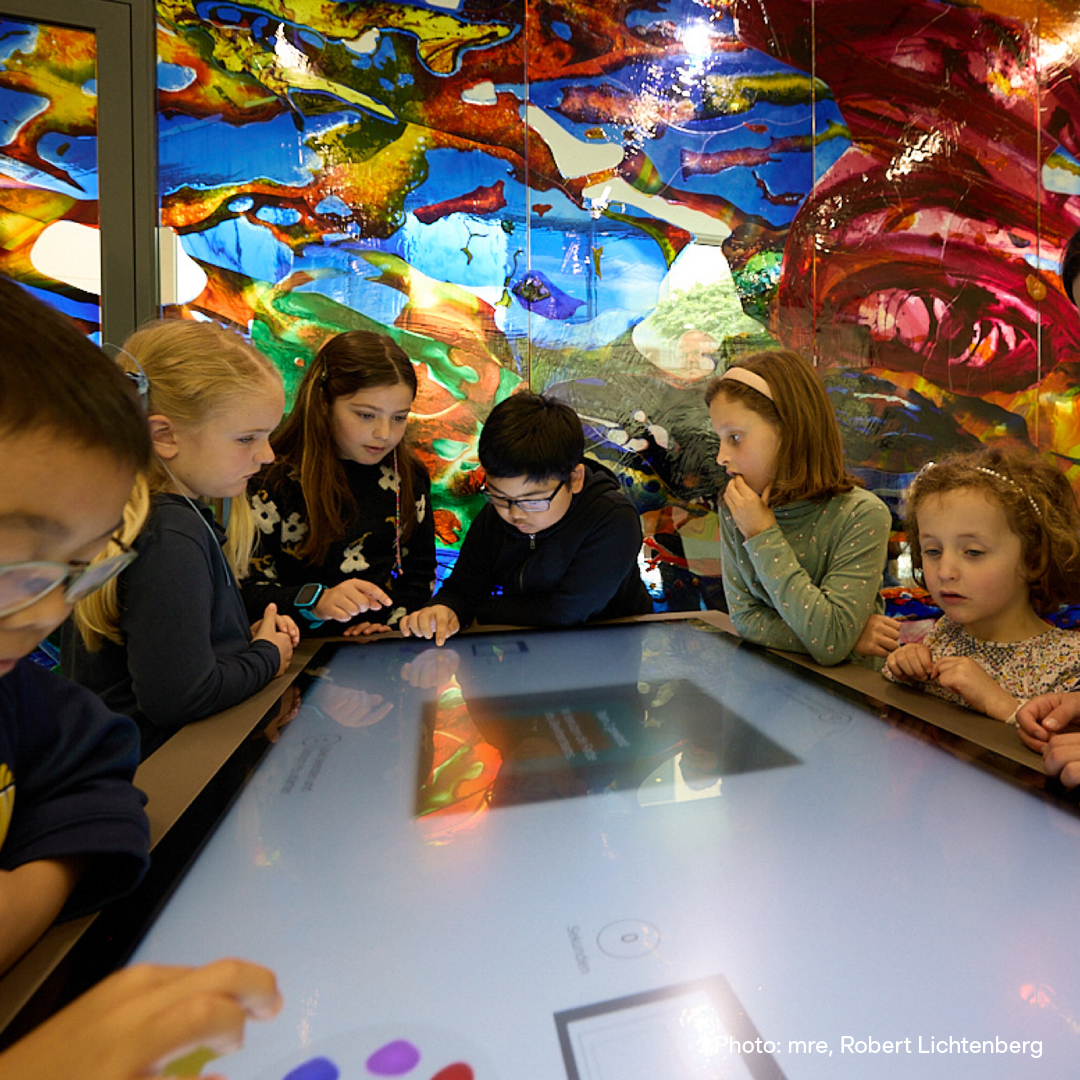
Game “Throwing colors”
This team game refers to the action paintings of the artist Shōzō Shimamoto, which can also be seen at the Museum Reinhard Ernst. Visitors create abstract art by digitally throwing bags of paint onto a canvas, just like the artist.
Game “See colors”
The color theory of Josef Albers can be experienced by young visitors at this station. The goal is to digitally mix colors and get as close as possible to the color code of an original painting from the exhibition.
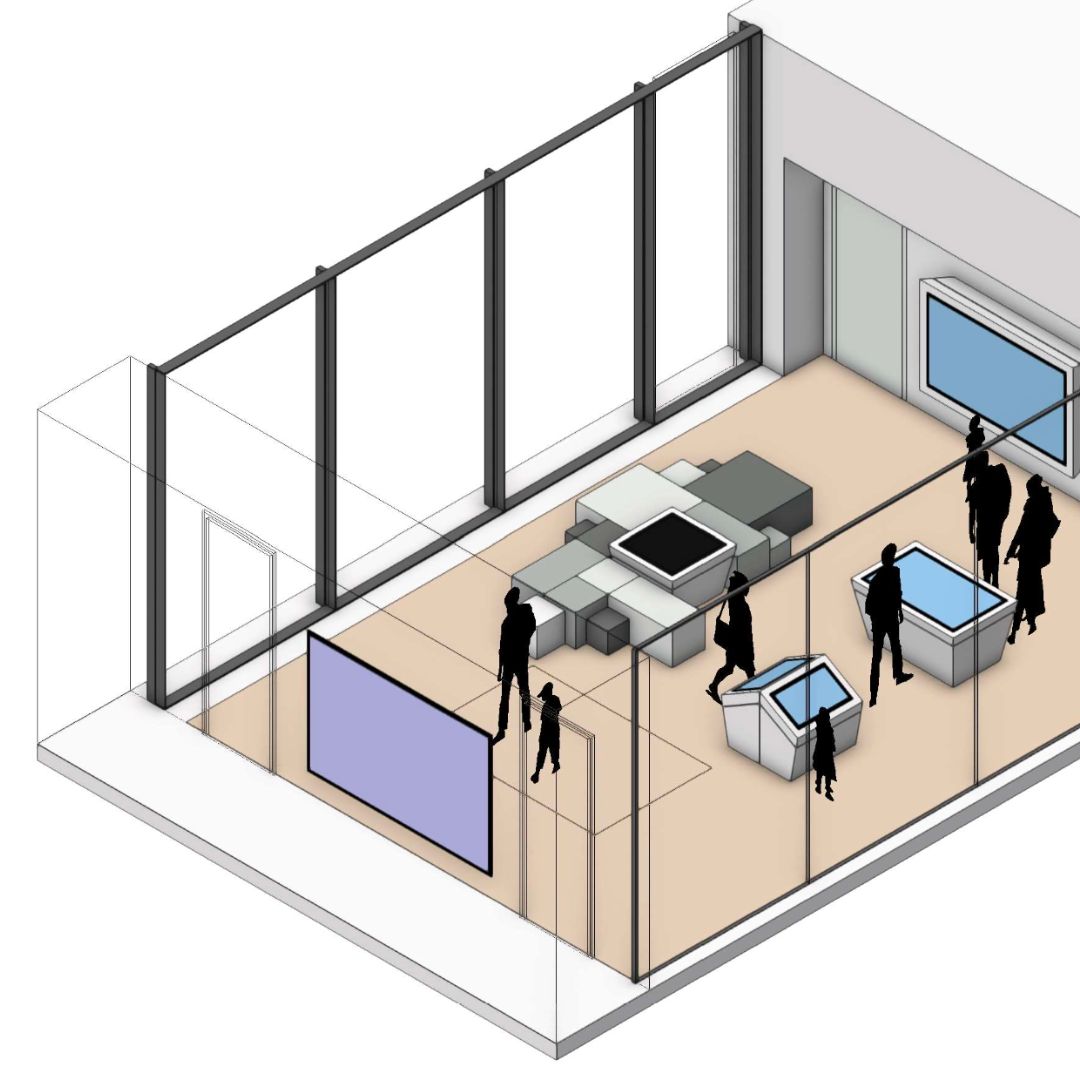
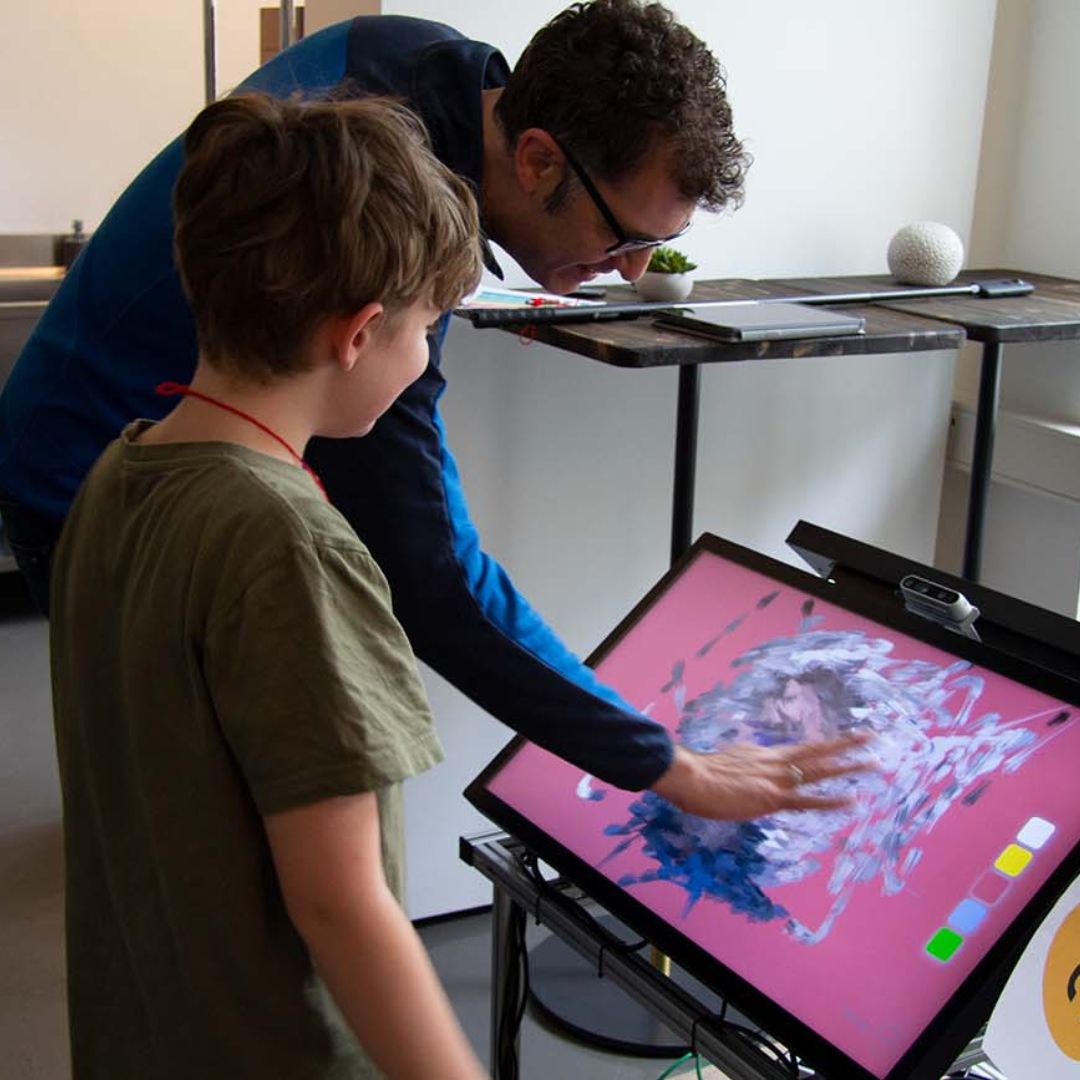
A new museum for abstract art
Making art tangible for everyone is the mediating approach of museum founder Reinhard Ernst and his wife Sonja. After around eight years of planning and construction, their new, architecturally impressive museum opened its doors to the public in summer 2024. One of the two art lovers’ main concerns is to promote children’s creativity, as Ernst repeatedly emphasises in interviews. He therefore sees the colour laboratory as the ‘heart of the new museum’. We are proud that we were able to make a major contribution to the success of this heartfelt project with the conception and realisation of the colour laboratory.

Erfahren Sie mehr
Wir beraten Sie gerne zu den Möglichkeiten der digitalen Wissensvermittlung via Touchscreen für Ihre Ausstellung. Vereinbaren Sie jetzt einen unverbindlichen Ersttermin.